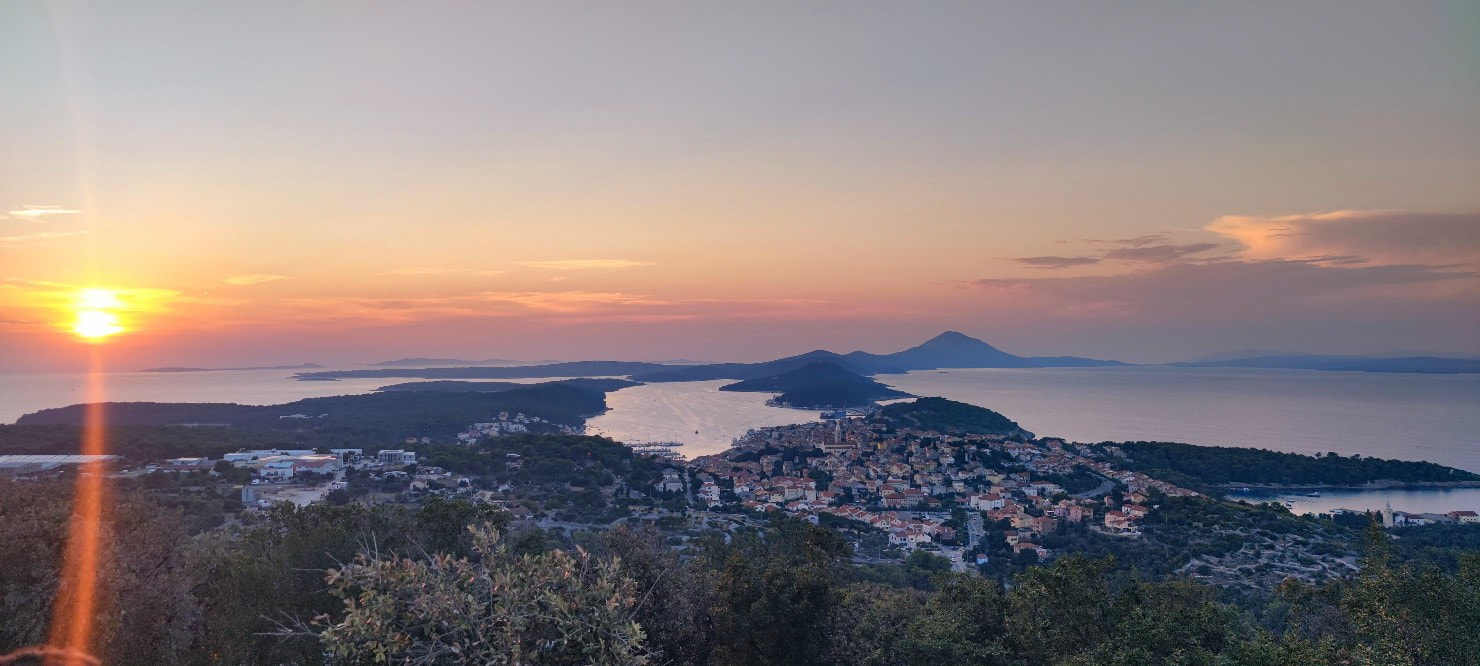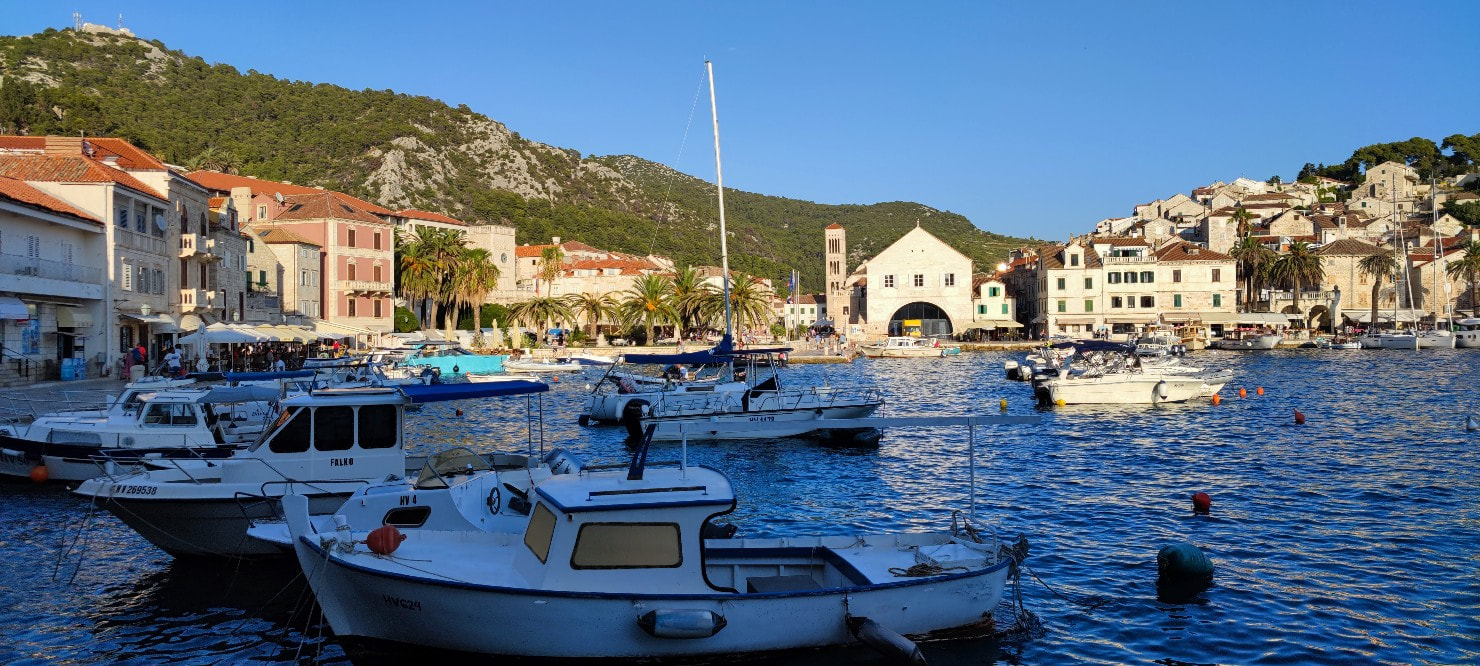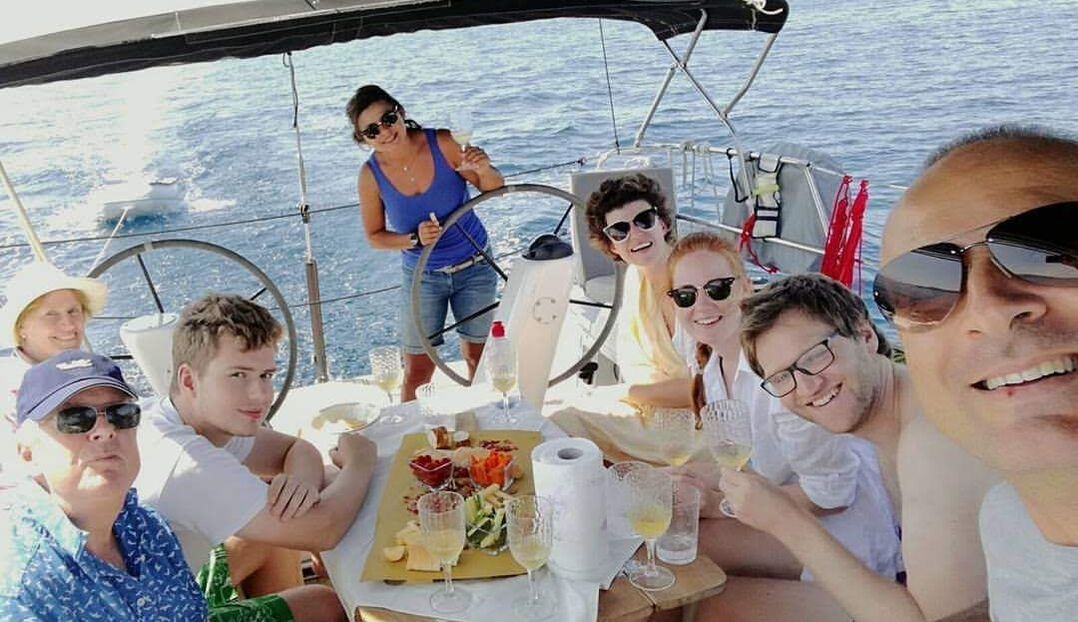Imagine the sun casting its golden rays over the Adriatic Sea as you set sail from the historic city of Dubrovnik. The gentle breeze fills your sails, guiding you through Croatia's stunning archipelago.
Each island emerges like a jewel from the azure waters, each with its own story, waiting to be discovered. Sailing in Croatia isn't just a holiday; it's a journey through time, nature, and the serene beauty of the Dalmatian coast.
Each island emerges like a jewel from the azure waters, each with its own story, waiting to be discovered. Sailing in Croatia isn't just a holiday; it's a journey through time, nature, and the serene beauty of the Dalmatian coast.
The Splendor of the Croatian Coastline
Croatia boasts a staggering 1,778 km of coastline, which includes over 1,000 islands. Only 48 of these islands are inhabited, leaving a vast expanse of unspoiled natural beauty for sailors to explore.
The Croatian Bureau of Statistics reports that the country welcomed over 12 million tourists in 2022, many drawn by the allure of its pristine sailing conditions.
The Croatian Bureau of Statistics reports that the country welcomed over 12 million tourists in 2022, many drawn by the allure of its pristine sailing conditions.
Popular Sailing Routes
- Dubrovnik to Split: This route is a favorite among sailors for its blend of historical sites and natural beauty. The journey from Dubrovnik to Split, covering approximately 130 nautical miles, offers a glimpse into Croatia's rich history, with stops at islands like Korčula and Hvar, known for their vineyards and ancient towns.
- Kornati Archipelago: An absolute paradise for nature lovers, the Kornati National Park encompasses over 140 islands. This area is less about bustling city life and more about the serenity of nature. According to a National Park report, the Kornati islands see an average of 150,000 visitors annually, many of them sailors seeking a tranquil escape.
- Istria Peninsula: For a blend of Croatian and Italian cultures, the sailing route around Istria is unparalleled. This route is famous for its culinary delights, with truffle-infested forests and vineyards dotting the coastline.
Sailing Conditions and Best Times to Visit
Croatia enjoys a Mediterranean climate, making it an ideal sailing destination from April to October.
The Croatian Meteorological and Hydrological Service indicates that the summer months see consistent northeasterly and northwesterly winds, perfect for sailing.
However, the peak season, July and August, can be quite crowded and expensive, so many seasoned sailors prefer the shoulder months of May, June, September, and October.
The Croatian Meteorological and Hydrological Service indicates that the summer months see consistent northeasterly and northwesterly winds, perfect for sailing.
However, the peak season, July and August, can be quite crowded and expensive, so many seasoned sailors prefer the shoulder months of May, June, September, and October.
Type of Vessel: The Cornerstone of Charter Costs
The first factor influencing the cost is the type of vessel. Sailboats, catamarans, motorboats, and luxury yachts each have different price points.
For instance, sailboats might cost between €1,500 to €4,000 per week, whereas catamarans, offering more space and stability, can range from €3,000 to €10,000 weekly.
Data from the Croatian Bureau of Statistics (2023) shows that sailboats are the most popular choice, accounting for 60% of all charters. Catamarans follow with 25%, and motorboats and luxury yachts make up the rest.
For instance, sailboats might cost between €1,500 to €4,000 per week, whereas catamarans, offering more space and stability, can range from €3,000 to €10,000 weekly.
Data from the Croatian Bureau of Statistics (2023) shows that sailboats are the most popular choice, accounting for 60% of all charters. Catamarans follow with 25%, and motorboats and luxury yachts make up the rest.
Seasonal Variations: Timing is Everything
Seasonality plays a pivotal role in charter costs. The peak season, from July to August, sees the highest prices due to increased demand. During this period, prices can surge by up to 50% compared to the low season (April, May, and late September). For budget-conscious travelers, opting for shoulder seasons (June and early September) can offer a balance between cost and favorable weather conditions.
The Croatian Chamber of Economy's report (2023) highlights that the average cost of a week-long charter in peak season is approximately 30% higher than in the shoulder season.
The Croatian Chamber of Economy's report (2023) highlights that the average cost of a week-long charter in peak season is approximately 30% higher than in the shoulder season.
Duration and Extras: The Devil is in the Details
Longer charters often provide better value, with many operators offering discounts for bookings exceeding two weeks.
Additionally, the cost of extras such as skippers, crew, and fuel can add significantly to the overall expense. A skipper, for example, can cost around €150 per day, as per the Croatian Maritime Federation's guidelines (2023).
Additionally, the cost of extras such as skippers, crew, and fuel can add significantly to the overall expense. A skipper, for example, can cost around €150 per day, as per the Croatian Maritime Federation's guidelines (2023).
Understanding APA in Sailing
APA stands for Advance Provisioning Allowance, a standard practice in the yacht charter industry. It's essentially a fund set aside to cover the operational expenses of a chartered yacht that are not included in the charter fee. This fund is used to pay for things like fuel, food, drinks, port fees, and any special requests you may have during your charter.
How Does APA Work?
- Estimation and Payment: When you book a yacht, the charter company will estimate the APA, usually around 20-30% of the charter fee. This amount is paid in advance along with the charter fee.
- Use of Funds: During your charter, the captain will use the APA to pay for expenses such as fuel, docking fees, food and beverages, and any other costs incurred.
- Tracking Expenses: The captain keeps a record of all expenditures and can provide you with updates on how the APA is being spent.
- Final Settlement: At the end of your charter, the captain will present a detailed account of all expenditures. If the expenses were less than the APA, you'll be refunded the difference. Conversely, if expenses exceeded the APA, you would be expected to pay the additional amount.
Why is APA important?
APA ensures that the crew can provide a high level of service without financial constraints. It allows for flexibility in planning meals, routes, and activities, as the crew can make arrangements and purchases based on your preferences.
Tips for Managing Your APA
- Communicate Preferences: Before your charter, discuss your preferences with the charter company or the captain. This helps in making accurate APA estimations.
- Monitor Spending: Feel free to ask the captain for periodic updates on the APA expenditure.
- Be Realistic: Understand that certain requests or itineraries can significantly increase costs. Luxuries like fine wines or extended cruising distances will impact the APA.
The Allure of Croatian Marinas
Croatia, with its pristine coastline stretching over 1,778 kilometers, is home to more than 50 marinas, welcoming over 16,000 boats and yachts annually. According to the Croatian Ministry of Tourism, the country saw a 20% increase in nautical tourism in recent years, highlighting its growing popularity.
Top Marinas and Their Capacities
Among the most renowned marinas, ACI Marina Split stands out with its 318 berths and 30 boat places on land.
Following closely is Marina Frapa in Rogoznica, boasting 462 sea berths and 150 dry berths. These marinas are not just docking places but hubs of nautical activity, equipped with modern facilities and services.
Economic Impact of Sailing Tourism
Sailing tourism significantly contributes to Croatia's economy. The Croatian Bureau of Statistics reports that the average daily expenditure of a sailor is approximately 126 euros, higher than the average tourist. This spending is vital for local economies, especially in coastal towns.
Environmental Initiatives in Croatian Marinas
Croatia is also a leader in environmental stewardship. Many marinas, such as Marina Punat on Krk Island, have been awarded the Blue Flag, an international eco-label for environmentally friendly marinas. These initiatives ensure the sustainability of Croatia's marine and coastal resources.
The Future of Sailing in Croatia
Looking ahead, the Croatian government's strategic plan for nautical tourism envisions an increase in marina capacities and the development of sustainable practices. This vision aims to maintain Croatia's position as a top sailing destination while preserving its natural beauty.
Among the most renowned marinas, ACI Marina Split stands out with its 318 berths and 30 boat places on land.
Following closely is Marina Frapa in Rogoznica, boasting 462 sea berths and 150 dry berths. These marinas are not just docking places but hubs of nautical activity, equipped with modern facilities and services.
Economic Impact of Sailing Tourism
Sailing tourism significantly contributes to Croatia's economy. The Croatian Bureau of Statistics reports that the average daily expenditure of a sailor is approximately 126 euros, higher than the average tourist. This spending is vital for local economies, especially in coastal towns.
Environmental Initiatives in Croatian Marinas
Croatia is also a leader in environmental stewardship. Many marinas, such as Marina Punat on Krk Island, have been awarded the Blue Flag, an international eco-label for environmentally friendly marinas. These initiatives ensure the sustainability of Croatia's marine and coastal resources.
The Future of Sailing in Croatia
Looking ahead, the Croatian government's strategic plan for nautical tourism envisions an increase in marina capacities and the development of sustainable practices. This vision aims to maintain Croatia's position as a top sailing destination while preserving its natural beauty.
Understanding Mooring Costs in Croatia
Mooring in Croatia, while offering a slice of maritime heaven, can be surprisingly expensive. The costs vary significantly based on several factors:
- Type of Mooring: Costs differ for buoys, marinas, or anchoring in various locations. Marinas, offering more amenities, are typically pricier.
- Location: Popular destinations like Dubrovnik, Hvar, and Split often have higher mooring fees. Secluded areas might offer more budget-friendly options.
- Season: Peak tourist season (July and August) sees a surge in prices due to high demand.
- Boat Size: Larger boats incur higher costs, as they require more space and resources.
The Data: Breaking Down the Costs
Let's delve into the numbers:
Let's delve into the numbers:
- Marinas: The average cost for mooring a 40-foot yacht in a Croatian marina is between €80 to €120 per night in peak season. In off-peak seasons, this can drop to €50 to €70.
- Buoys: These are usually cheaper, ranging from €30 to €60 per night for the same size yacht.
- Anchoring: While anchoring in open areas can be free, some popular bays have started charging fees, approximately €20 to €40 per night.
- Long-term Mooring: For those looking to moor for an extended period, monthly rates can range from €500 to €1,000, depending on the location and season.
Conclusion: Setting Sail into the Future
The future of sailing in Croatia looks promising. With ongoing investments in marina infrastructure and a strong commitment to sustainability, Croatia is set to remain a top sailing destination. Whether you're seeking adventure, tranquility, or a voyage through history, sailing in Croatia offers an unparalleled experience.
As you unfurl your sails and navigate the Croatian waters, you're not just exploring the sea; you're embarking on a journey that intertwines the past, present, and future, surrounded by the breathtaking beauty of the Adriatic.
As you unfurl your sails and navigate the Croatian waters, you're not just exploring the sea; you're embarking on a journey that intertwines the past, present, and future, surrounded by the breathtaking beauty of the Adriatic.
If you are looking for charter packages in Croatian, contact us for offers at [email protected]
















